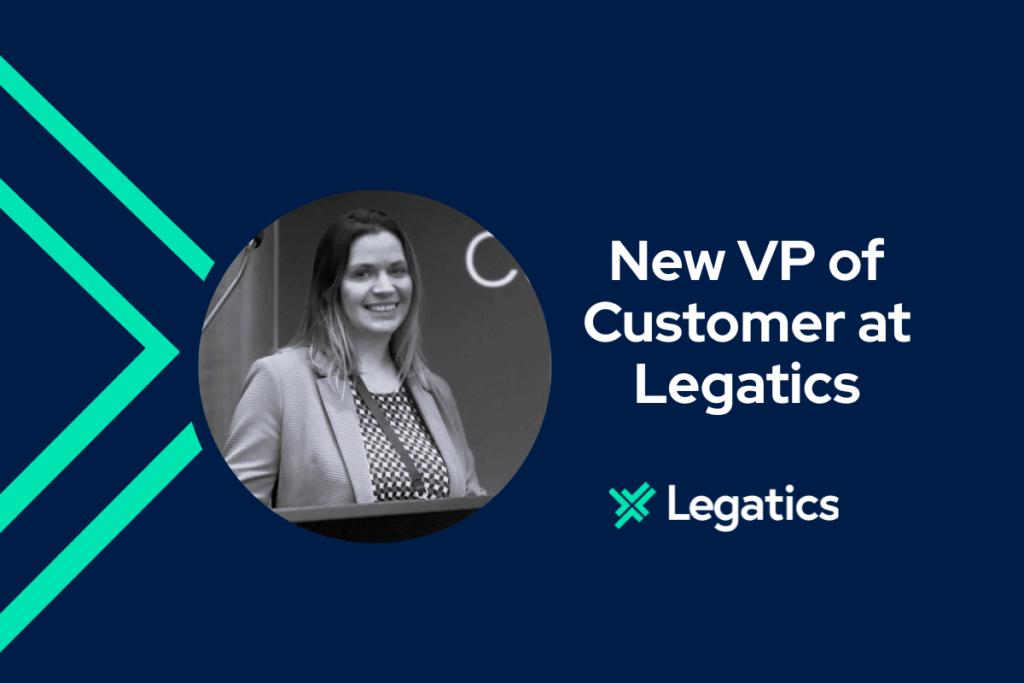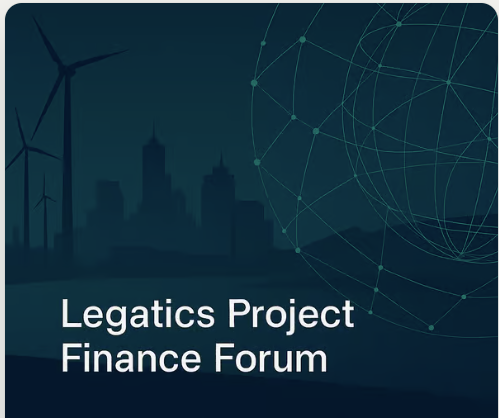The 2025 Project Finance forum focused on the evolving role of platform and portfolio structures in renewable energy financing. With multi-asset deals becoming increasingly common, discussions centred on how to manage legal, financial, and operational complexity while unlocking scale and flexibility.
The forum featured a panel discussion exploring strategic challenges and practical solutions in platform financings, followed by roundtable sessions where attendees shared experiences and best practices across different phases of the financing lifecycle.
Read through the insights from both the panel and roundtable discussions, focused on the guiding question: “How can we structure and deliver platform financings more effectively?”
Jump to discussion:
Market insights and trends
As renewable energy markets mature and diversify, the ability to finance smaller-scale projects efficiently has become a critical industry challenge. At the recent Legatics Project Finance forum, a cross-sector panel of legal, financial, and sponsor-side experts discussed the accelerating shift toward platform and portfolio financing models, offering insights into how these structures are unlocking scalability, flexibility, and innovation across global markets.
Opening the session, Legatics CEO Anthony Seale outlined the structural and technological trends underpinning this transformation – from record-breaking growth in renewables to the rise of co-located assets and declining battery storage costs. He framed platform financing as a timely response to the pressing need for efficient execution, risk diversification, and transaction velocity.
Panel discussion: Aggregation and innovation in project finance
The panel featured a cross-section of perspectives, including law firm partners, lenders, and sponsor-side counsel, all of whom are shaping the future of platform-based project finance. Moderated by Sonny Udovicic, Partner at Ashurst, the panel brought together:

They explored practical insights into:
- The key drivers behind the rise of portfolio and platform financings
- Structuring approaches that allow for flexibility while maintaining credit integrity
- Balancing sponsor flexibility with lender diligence and risk management
- Strategies for managing onboarding, documentation, and multiple closings
- How legal technology is enabling more transparent, collaborative execution across teams
The discussion emphasized that while these structures offer compelling advantages, execution is everything – and success depends on early alignment, efficient diligence, and tech-enabled workflows.


Structuring portfolio financings
Katherine described these as multi-asset financings that bundle small to mid-sized projects – often solar PV, battery storage, or hydro – into a single transaction to secure more attractive terms. Structures vary from HoldCo borrower models to cross-border and multi-layered platforms, with increasing flexibility depending on sponsor profiles and asset types.
The trend is clear: many deals now sit along a spectrum from traditional project finance to leveraged corporate finance, with sponsors seeking to reduce cost and increase control.
Market drivers and the rise of aggregation
William identified key drivers:
- Accelerating energy transition and net-zero targets
- Investor demand for ESG-aligned portfolios
- Institutional appetite for scalable, standardized asset pools
- Regulatory support in mature markets and early momentum in LATAM and Sub-Saharan Africa
He emphasized that platform financing unlocks assets that wouldn’t be viable as standalone projects – expanding the addressable market for both sponsors and lenders.
Construction vs. operational portfolios
Lyudmil noted that scale is essential – typically several hundred megawatts. A clear “risk envelope” defined early in the process helps preserve deal momentum. For construction-heavy portfolios, this includes:
- Clarity on merchant vs. contracted revenue
- Defined geographic and technological scope
- Forward visibility on utilization and funding drawdown
Operational portfolios, in contrast, often anchor deals and offer flexibility for rolling asset additions, pushing these structures further into the territory of business-style financings.
Advantages for stakeholders
- Sponsors benefit from flexibility – adding, replacing, or selling assets within a single financing vehicle.
- Lenders gain diversification across jurisdictions, technologies, and development stages.
- OEMs and vendors see opportunities to support transactions through structured vendor financing.
The consensus: portfolio structures reduce administrative burden, enhance optionality, and support efficient capital deployment.
Hedging & financial covenants
The panel noted a shift away from rigid hedging requirements:
- Hedging is often partial and based on legal minimums rather than full notional debt sizing.
- Asset Coverage Ratios (ACR) remain a key metric in construction financings.
- Loan-to-Value (LTV) covenants and third-party asset valuations are common in HoldCo structures.
FX and inflation-linked hedging are also incorporated in cross-border portfolios.
Due diligence, information flow and security
Diligence levels vary based on deal positioning on the PF-corporate spectrum.
Key points:
- Sponsors often push for tick-box or self-certified diligence for smaller assets.
- Lenders demand structured, scalable eligibility criteria for asset onboarding.
- There’s growing use of recycled or confirmatory due diligence to reduce costs.
Security packages remain a balancing act:
- While HoldCo-only security is a sponsor goal, lenders often require asset-level rights – especially in cross-border contexts.
- Flexibility is improving, with many deals securing only core, near-term RTB assets.
Practical implementation & technology
Panelists highlighted the need for tools to manage:
- Complex closings
- Rolling asset updates
- Multilateral stakeholder communication
Tools like transaction management platforms are helping to standardize workflows, increase transparency, and reduce friction in execution – especially valuable in deals with high-velocity onboarding or multi-phase development.
Group discussions
As part of the forum, smaller roundtable groups explored specific challenges and innovations shaping the future of portfolio and platform financing. These focused discussions provided deeper insight into what’s driving successful execution in today’s increasingly complex project finance environment.
Creating bankable portfolios
One roundtable focused on what makes a portfolio structure bankable, particularly for senior commercial debt. The discussion highlighted:
- Concentration management: Lenders assess exposure across asset types, jurisdictions, and lifecycle stages. Single-borrower limits are a key constraint as portfolios scale.
- Shift in lender appetite: The market has evolved to support portfolios composed primarily of construction-stage assets, whereas earlier models required more operational track records. Development-stage assets often fall outside the comfort zone of senior lenders and may rely on vendor financing, OEMs, or private credit.
- Eligibility frameworks: Portfolios are increasingly defined by clear eligibility criteria – covering offtake arrangements, technology types, and jurisdictional risk. These may be enforced through fixed concentration limits or managed more dynamically through model-driven debt sizing and re-running of leverage metrics.
Mitigating cross-border and political risk
Another group examined how platform financings can help manage risk in an uncertain global environment, particularly in emerging markets:
- Platform resilience: Aggregated structures reduce exposure to individual asset or country-level volatility. They are especially useful when dealing with risks such as retrospective subsidy changes, supply chain disruption, and ESG performance gaps.
- Cross-jurisdictional complexity: Legal implementation challenges can arise, especially in civil law jurisdictions unfamiliar with platform structures common in English law. Issues such as notarization requirements and restrictions on cross-collateralization need to be addressed early. While these challenges are real, participants agreed they are generally surmountable with local legal support and proactive structuring.
- Strategic evaluation: Sponsors must weigh the benefits of a centralized platform approach against the potential efficiency of local, single-asset financing – particularly in jurisdictions where platforms are less established.
The role of technology in project finance
The third roundtable focused on the growing influence of legal and data technology in financing workflows:
- From complexity to clarity: While technology has enabled more intricate deal structures and longer documentation, it has also introduced challenges in day-to-day management, especially for sponsors juggling development, reporting, and compliance obligations.
- Driving simplification: The next phase of digital innovation is focused on streamlining – not complicating – deal execution. This includes better onboarding processes, automated monitoring, and more responsive lender communications.
- Learning from data: As transactions generate more usable data, there is a significant opportunity to extract insights that can improve standardisation, refine structuring decisions, and accelerate execution across portfolios.






